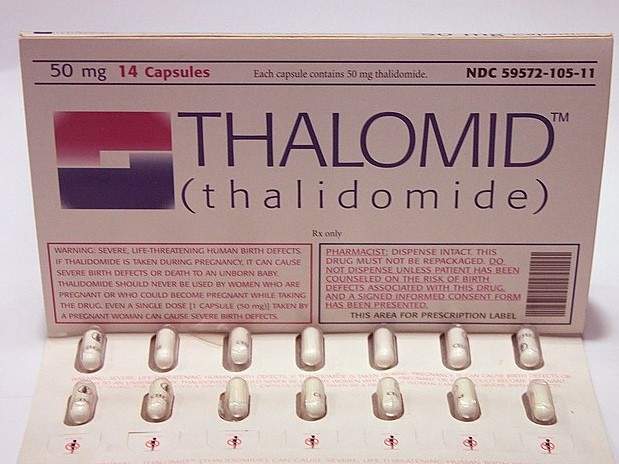
Researchers at the Dana-Farber Institute and Brigham and Women’s Hospital in the US claim to have discovered how thalidomide caused severe birth defects and deaths in thousands of children during the 1950s and 1960s.
After being discovered in Germany in 1954, thalidomide was approved in 40 countries for pregnancy nausea. However, over time it became clear that the children of mothers taking the drug during a certain window in their first trimester were born with deformities or died before birth.
According to the Thalidomide Society, there are no absolute figures for how many children were affected the drug, however, it has been estimated that it caused around 24,000 babies to be born with defects and approximately 123,000 to be still born across the world.
Earlier research into thalidomide’s mechanism of action suggested that the protein SALL4 may be crucial to understanding the impact on foetuses. SALL4 is known to play a key role in early human development as it contributes to the correct formation of organs.
Researchers also noticed that people with Duane Radial Ray Syndrome, which means they have a dysfunctional SALL4 gene, exhibited the same deformities as new-born thalidomide victims.
The team at the Dana-Farber Institute and Brigham and Women’s Hospital decided to study the effect of thalidomide and two similar immunomodulatory imide (IMiD) drugs on human stem cells.

US Tariffs are shifting - will you react or anticipate?
Don’t let policy changes catch you off guard. Stay proactive with real-time data and expert analysis.
By GlobalDataThey found all three drugs triggered a rapid reduction in SALL4 production in the cells. Thalidomide also affected other C2H2 zinc finger transcription factor proteins, but this was not thought to cause the birth defect-related damage attributed to the drug.
Dana-Farber Institute scientist Eric Fischer said: “People have speculated about SALL4 for a long time, but this is the first experimental link to be shown.”
Thalidomide was discovered to be a safe treatment for those with certain types of cancer, as well as conditions such as leprosy. Rather than binding to receptors, thalidomide and other IMiD drugs work by hijacking a molecule, stimulating it to destroy SALL4 and other proteins in a process called degradation.
Fischer: “It’s a fundamentally new method of action that these drugs have, and that’s why there’s so much interest in them. If we understand the caveats and advantages of thalidomide, then we can translate this knowledge to new drug candidates.”



